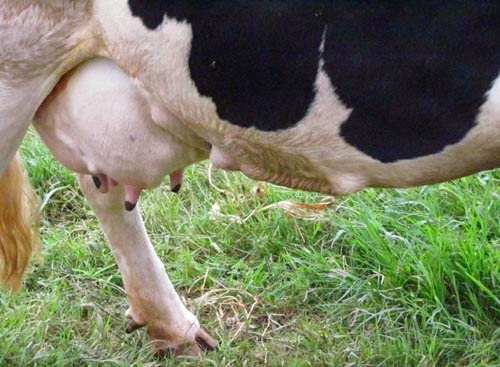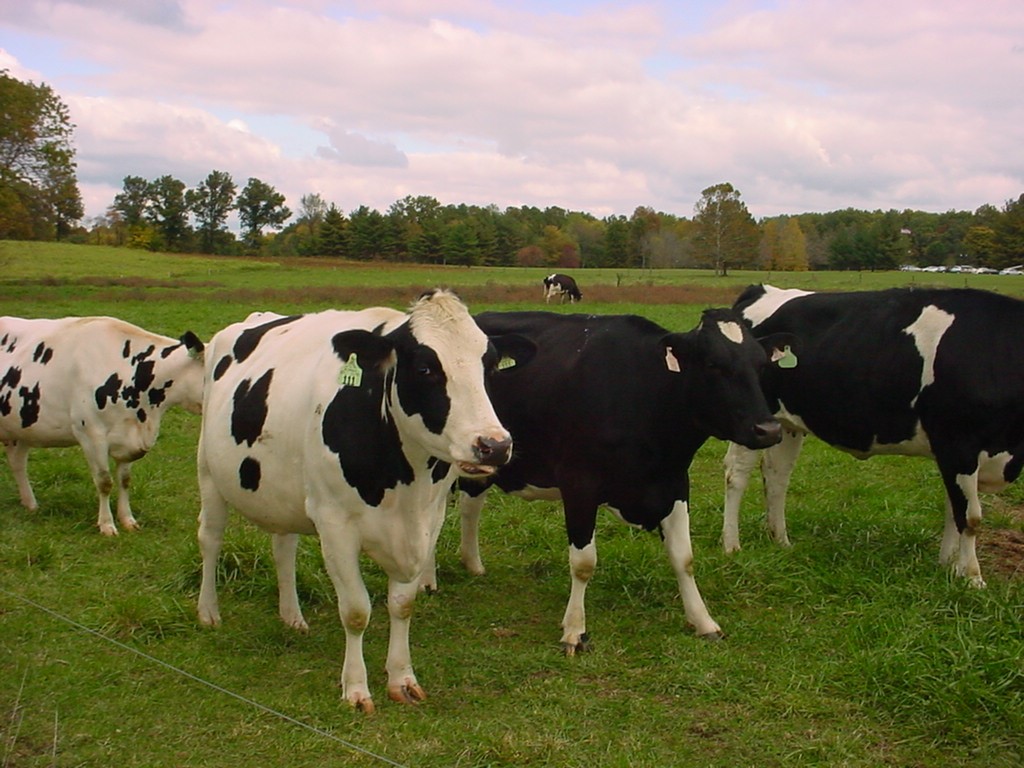Mastitis greatly affecting the productivity and health of cows. From safe milking techniques to barn hygiene measures, along with the use of drugs and care, all will help reduce the risk of infection, increase productivity.
Mastitis in dairy cows is one of the common diseases in dairy farming, most dairy farming areas encounter it. Mastitis is an infection deep inside the udder caused by bacteria entering through the milk vent at the tip of the nipple. The disease often harms cows during the milking stage, reducing productivity, fertility and even causing death if not treated promptly.
1. CAUSES OF MASTITIS IN DAIRY COWS
Due to the animal itself:
Breasts are too large and long, nipple holes are too large.
Long-term dairy cows, giving birth to many litters, are susceptible to mastitis in the early lactation and dry period.
The resistance of cows is poor.

Due to environment:
Poorly cleaned barns, improper care and management.
Due to infection: Pathogenic bacteria are often found on the body of dairy cows, especially the udders and in barns and milking equipment.
Due to other factors such as:
Improper milking techniques, breeds, seasons, and stress issues.
The causes of the disease are often intertwined, mastitis rarely occurs due to only one cause, but is often caused by many causes acting together.
2. SYMPTOMS OF THE DISEASE
When suffering from mastitis, dairy cows will have the following symptoms:
Swollen udder, epithelial cells in milk, fever, loss of appetite, painful reaction to touch, difficulty milking or cessation of milk secretion.
Check the color, smell, and consistency of the milk with the naked eye to see if the milk has a foul smell, is yellow, lumpy, or has blood.
Damaged mammary glands, complications such as:
Breast atrophy:
Most breast cells are damaged, milk secretion function does not recover.
The volume of the diseased breast lobe is smaller than normal, the ability of the mammary gland to secrete milk is reduced or completely lost.
Breast fibrosis:
Touching the breast feels firm or pressing hard on the mammary glands feels solid lumps or completely solid.
Necrotic breast tumor:
At first, the breast surface has hard, painful, purple-pink patches that later become ulcerated and necrotic with pus.
The entire breast is swollen, pressing on it causes pink fluid to flow out.

3. HOW TO TREAT THE DISEASE
Local treatment:
Perform breast massage regularly to enhance local circulation, helps blood circulate.
Regularly clean the breasts and nipples to avoid secondary infections.
Intramast LC into the breast.
Use one of the following anti-inflammatory, pain-relieving, and antipyretic drugs: Dexasone, Keprofen, or Fluxin 50, intramuscular or intravenous injection, continuously for 1-3 days.
You can inject the cow with one of the following supplements: Butasal 100, Butavit-100 or Introvit.

Systemic treatment:
Use antibiotics such as: Biocillin-150 LA or Biogenta or Ceftionel-50. Intramuscular injection once a day, continuously for 3-5 days.
Household reason: Hold cage camp clean will and care squirrel, feed nourish good in time treat
Disinfect barns and livestock equipment with Dexon super or IONDIN @ periodically
2-3 times a month.
4. HOW TO PREVENT MASTITIS IN DAIRY COWS
Before milking: Keep the milking stall dry.
When milking: The first milk stream from each teat must be removed (do not let it fall onto the floor).
When in doubt, or during treatment, express the first few drops of milk into a tray dark to observe the color of the milk, and see if the milk is curdled.
Express milk thoroughly to increase milk fat content and reduce the risk of mastitis.
Healthy cows are milked first, those with mastitis are milked last.
Milk with mastitis and milk under antibiotic treatment should be kept separate and not mixed.
After milking:
IONDIN @ antiseptic solution
Wash all milking equipment with soap, rinse with boiling water, and dry on a rack.
Dry milk process:
Reduce milking frequency.
Inhibits milk ejection reflex
Give limited water
Gradually reduce the amount of concentrated food.
Inject DEPOLAC after milking at the last milking
Strictly monitor hygiene conditions
Dip the udder in antiseptic after milking.
You need to pay attention:
What stage is the cow in, whether she is pregnant or not, it is necessary to consider drugs that can affect the fetus.
A combination of measures should be used: increasing the frequency of milking, pumping the breasts, and injecting systemic medication.
We have just provided detailed instructions on the causes, symptoms, treatment methods and effective prevention methods for mastitis in dairy cows in order to protect the health of the herd.
